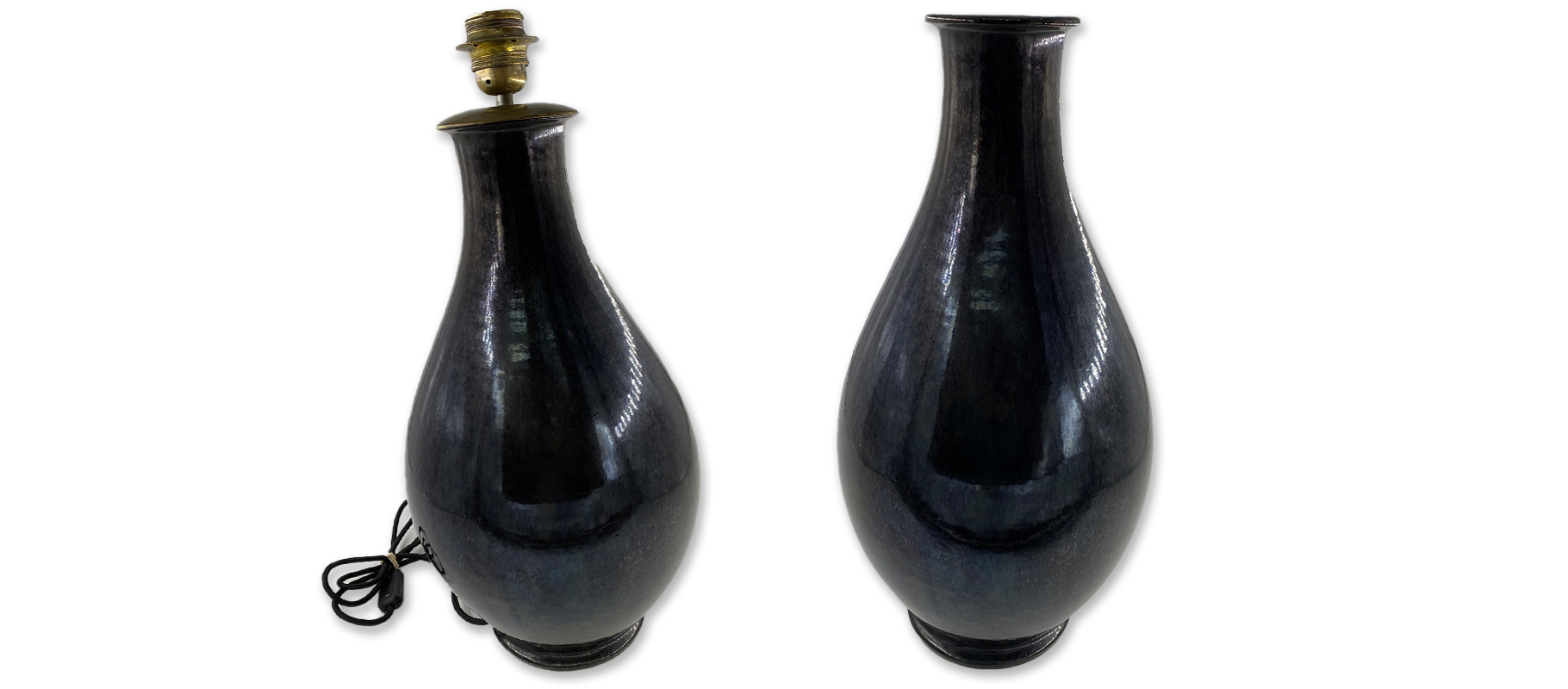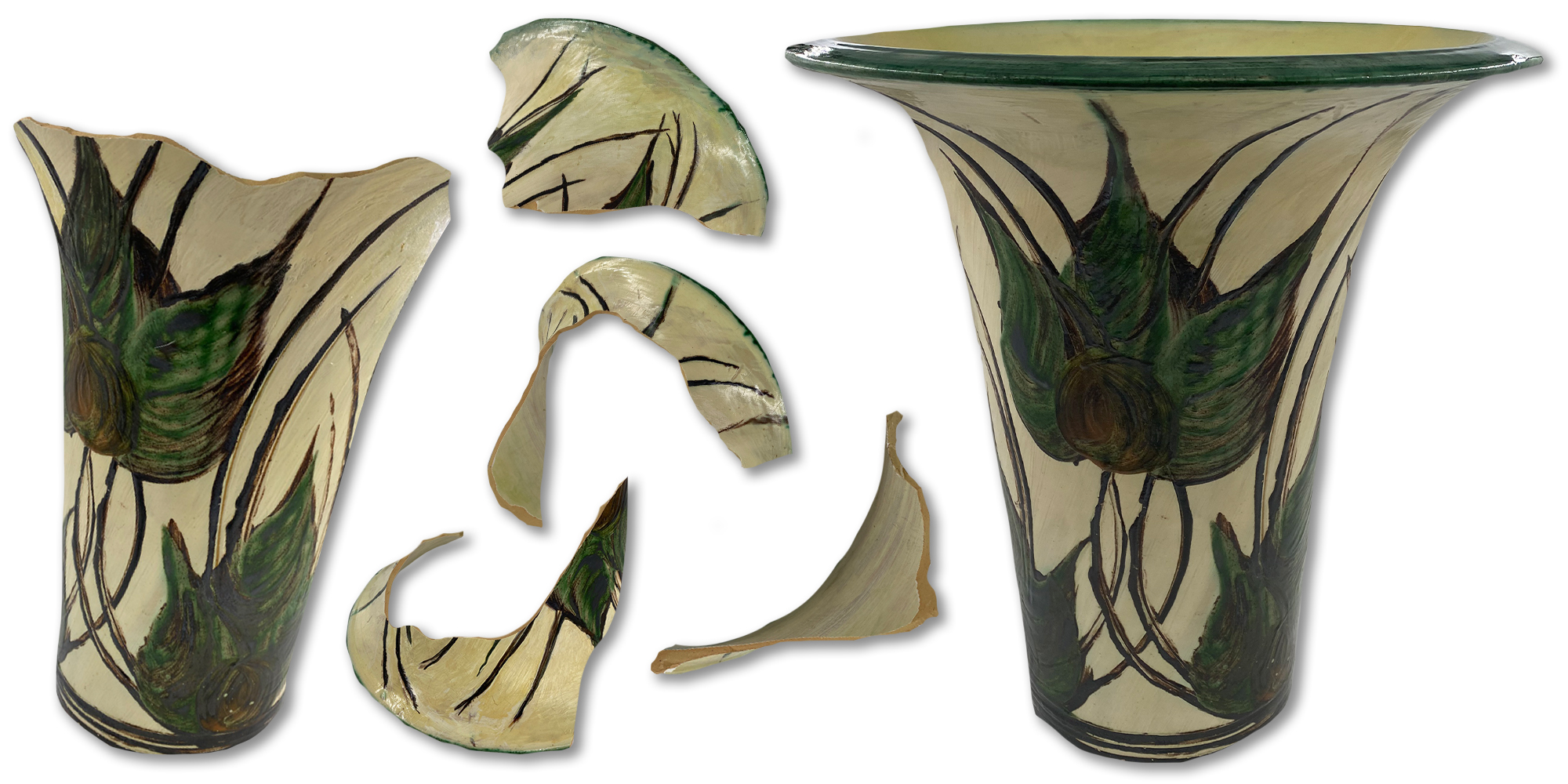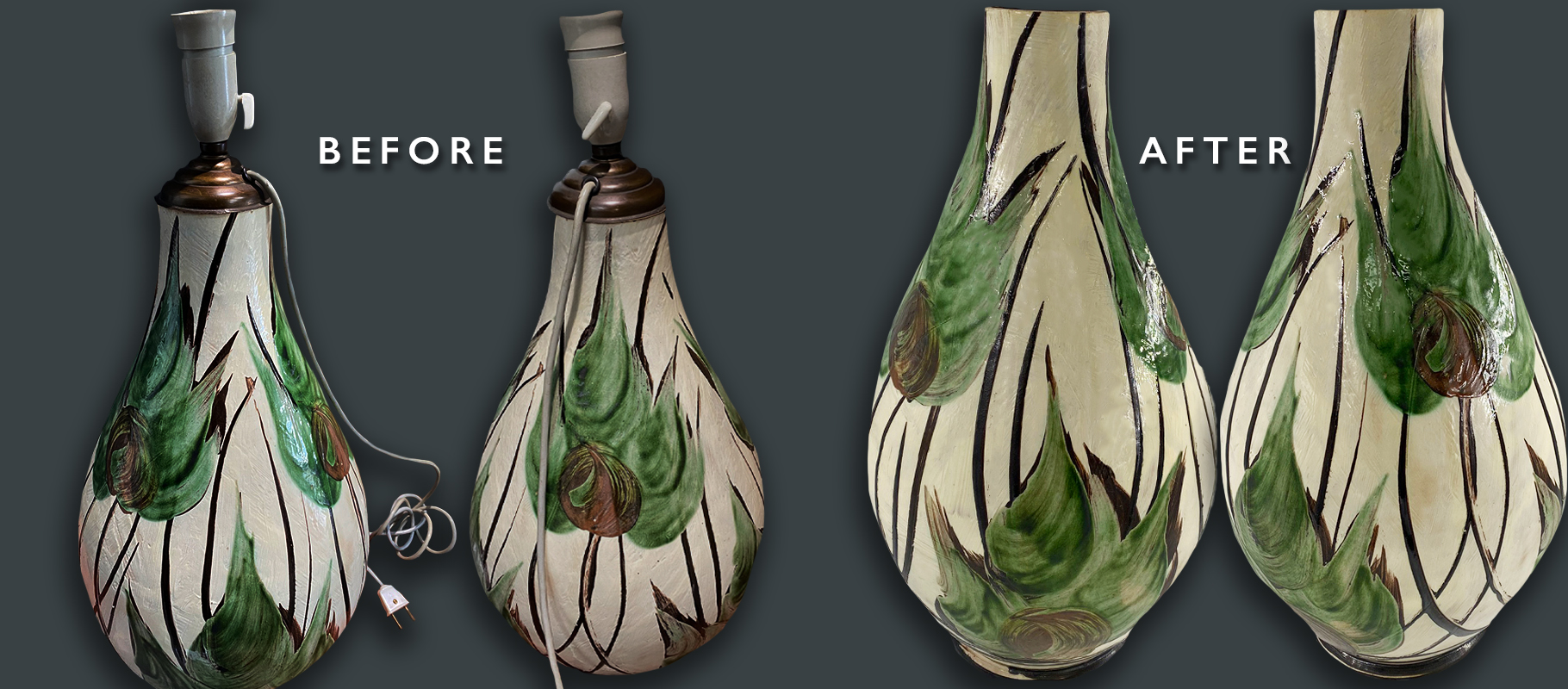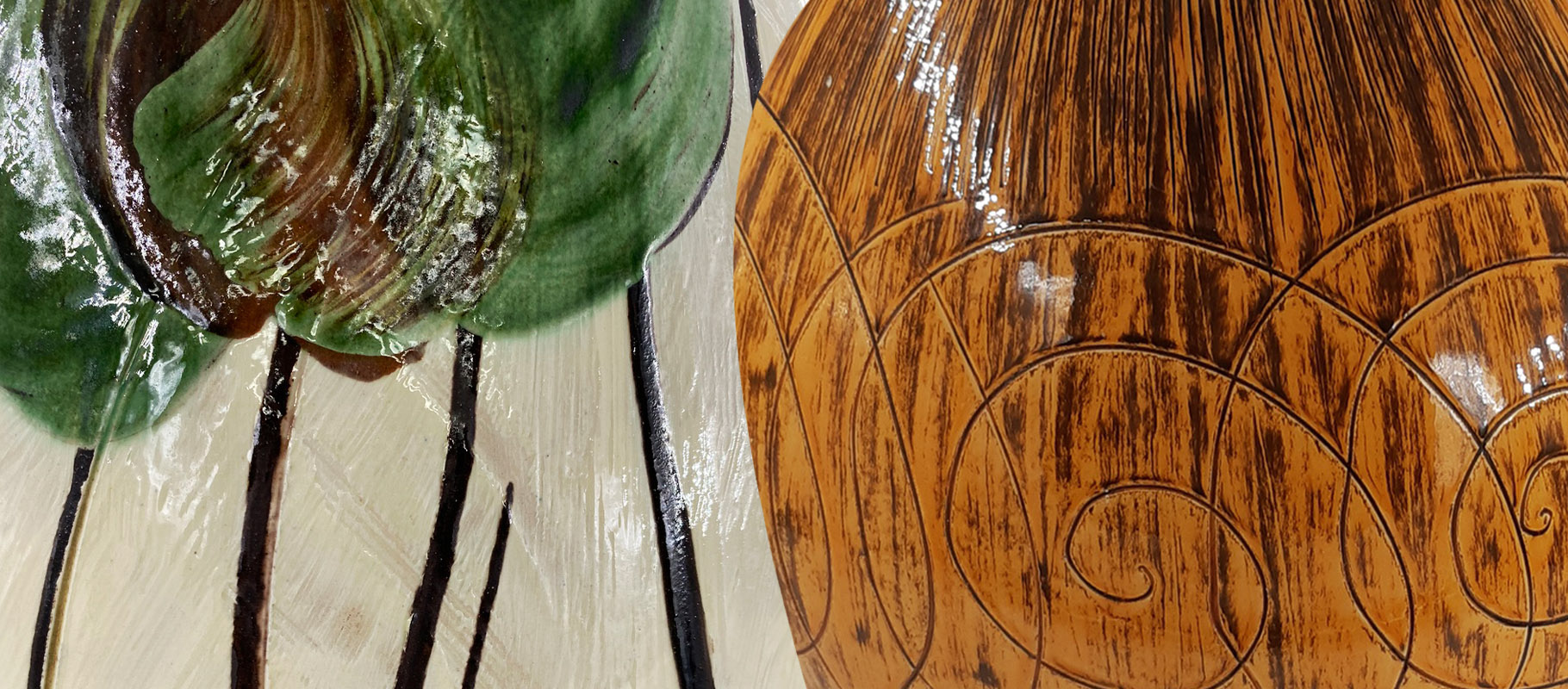From walls filled with oil paintings to cabinets full of porcelain, many of our clients have extensive and diverse collections. For an enthusiastic connoisseur of art and antiques, the value of each item is often highly personal rather than simply monetary.
 Above: a selection of Kähler vases from our client
Above: a selection of Kähler vases from our client
This was the case with a collection of ceramic vases by Danish manufacturer Kähler Keramik, much admired by their owners who hoped to revive their collection due to incidents of accidental damage and a historic alteration. We explored the history of these unique Danish designs and spoke to our client about their growing collection.
The history of Kähler
Established by Joachim Christian Herman Kähler in the mid 19th century, the manufactory originally produced functional kitchenware. When Joachim’s son Herman A. Kähler took over the business in the late 19th century, he began to veer away from utilitarian pots and stoves, opting instead for an artistic approach. By the 1880s, Kähler Keramik employed various artists to create unique designs for their products, echoing the Arts and Crafts movement in their natural and historical influences.
 Above: the restoration of a vase to reverse its conversion into a lamp
Above: the restoration of a vase to reverse its conversion into a lamp
One such influence was the tin-glazed earthenware of the renaissance period. Practised for centuries in southern Europe as Maiolica and Faience, the high shine finish was a classic example of expert craftsmanship. Kähler introduced their own lustre glazing process in the late 19th century, opting for various warm tones such as orange, yellow and red. You can read more about tin-glazed earthenware in our previous article here.
 Above: details of Kähler decoration and glaze
Above: details of Kähler decoration and glaze
“We’ve been interested in Kähler for some 4-5 years following a long weekend in Copenhagen. Our son in law is interested in everything Danish and introduced us to Kahler ceramics. We particularly like the works by Svend Hammershoi with the yellow and orange uranium glazing. Also the leafy works produced by the female artists in the factory using their cow horn technique are absolutely beautiful.”
Original ceramics from this late 19th century period up until the mid 20th century are now sought-after by collectors. Individual vases often sell for between £1000 and £5000 depending on their desirability, age and condition.
Kähler restoration
Like many forms of decorative art, Kähler vases are vulnerable to accidental damage and often end up in our studio due to issues with transport and packing. They are often found converted into a lamp, a feature that some collectors would rather not display. Our conservators have removed the lamp element from two Kähler vases on our client’s request.

When approaching a shattered vase, our conservator collects every piece to ensure historic and artistic integrity. These fragments are re-adhered using a non-yellowing conservation adhesive. If any parts are missing, they can be expertly re-moulded and colour-matched. A sensitive amount of retouching to the damaged areas may also be required. The vase is finished with a matching glaze, for a clear and stable result.
“About 6 months ago we purchased a leafy Kahler vase from a dealer in New York. When it was delivered we found that it was badly broken into a number of pieces. We decided to have the vase restored and found Fine Art Restoration Company on the internet. The work you have done for us so far has been outstanding.”

How can we help?
If you have a Kähler vase, or a similar tin-glazed ceramic item, please speak to our team today for advice and an obligation-free quotation. Email us via [email protected] or call 0207 112 7576

 Above: a selection of Kähler vases from our client
Above: a selection of Kähler vases from our client Above: the restoration of a vase to reverse its conversion into a lamp
Above: the restoration of a vase to reverse its conversion into a lamp Above: details of Kähler decoration and glaze
Above: details of Kähler decoration and glaze




